 |  |
By David Kier
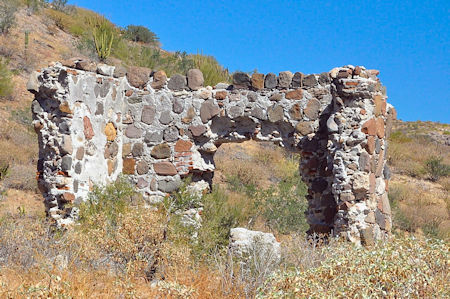
The twenty-five Spanish missions on the peninsula of Baja California, plus two more founded after Mexico’s independence, have many intriguing mysteries and questions of history. Some of these are as simple as what year they were established, or as questionable as to what year they were abandoned, or as odd as what was their true name.
Dolores del Sur and La Pasión
Solving mysteries of Baja California history is my passion. Traveling the deserts and mountains of the peninsula to visit the many mission sites inspires one to learn more of who was there hundreds of years ago and what they did. When researching the history of the Spanish missions in Baja California solutions to the mysteries present themselves.
This story begins with the mission of San Juan Bautista that was founded in 1705, 21 miles south of Loreto, at Ligüí. Sadly, it suffered from lack of consistent water and hostile Native attacks. The benefactor, Juan Bautista López, also fell into bankruptcy ending his funding for the mission named in his honor. In 1721, the mission at Ligüí was abandoned.
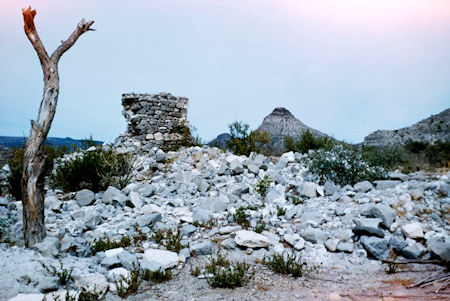
The Marqués de Villapuente, a great friend of the Jesuits, provided funds for eight missions on the peninsula. One of these would be a new mission developed by Padre Clemente Guillén. In 1720, Guillén traveled south from his mission at Ligüí to assist with the building of the mission at La Paz. On his journey south, he discovered an excellent mission site, the Natives called it Apaté. The next year, he abandoned San Juan Bautista de Ligüí and moved south to establish Mission Nuestra Señora de los Dolores Apaté. The Jesuits had a visiting station (visita) near Loreto named Dolores, so this new mission was often called “Dolores del Sur” as it was south of Loreto’s Dolores. Walls and other construction from the 1721-1741 mission site are still visible about 2 miles inland of the gulf coast.
In 1741, Guillén moved the Dolores mission some 15 miles southwest to a location that was a visita named La Pasión. The Natives had called the place Chillá and Tañuetía (The Place of Ducks). The mission prospered at this location for the next 27 years. Typically, as at other missions, when writing about this location, the missionaries used the original location name, La Pasión. However, when financing was discussed, the official name Nuestra Señora de los Dolores Chillá was used and sometimes “del Sur” was added after Dolores.
In 1768, the Jesuits were removed from California and replaced by the Franciscans who were there only five months when Spain’s visitor general, José de Gálvez, suddenly ordered the mission closed and sent the population of Guaycura Indians south to work the farms at Todos Santos. They joined the Indians of nearby Mission San Luis Gonzaga, which was also closed by Gálvez.
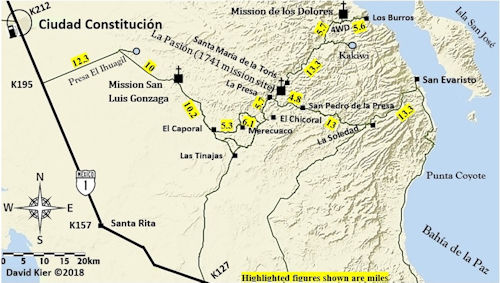
Authors in the Twentieth Century were naturally confused and presumed La Pasión and Dolores del Sur were two different missions rather than a single mission moved to a new location with a changed name. Reading texts, ledgers, and letters written by the Jesuits is a great way to clear the air of all these names and where they belong in history!
To visit the site of Ligüí, drive south of Loreto to Km. 84 and drive east towards Playa Ligüí. Just past a fork in the road, ½ mile from the highway, was the mission. The arroyo has widened and taken out the ruins. GPS: N25° 44.35’, W111° 15.88’
To visit Los Dolores Apaté, go 15 miles past the Los Dolores Chillá (La Pasión) mission site and hike down the foot trail to the canyon floor or go 2 additional miles and walk over to the viewpoint to look down on the mission site. GPS: N25° 03.33’, W110° 53.06’
To find Los Dolores Chillá (La Pasión), go to Rancho La Capilla, between Rancho La Presa and Santa María de la Toris. Foundation stones and rubble from the stone walls of the mission are behind the ranch house. Rancho La Presa is 27 miles from Mission San Luis Gonzaga and 49 miles from Highway 1 at Km. 195, south of Ciudad Constitución. There are other ways in. GPS: N24° 53.27’, W111° 01.86’
Todos Santos, Santa Rosa, and Pilar de la Paz
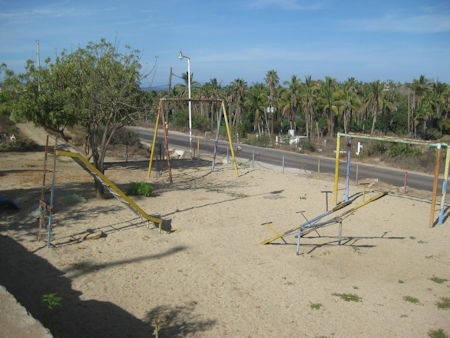
Books and maps indicate a mission named Todos Santos, and why not? Even some of the missionaries wrote about the “mission of Todos Santos.” A location may have a name different than a mission, if it was developed some time before the mission was established. This was the case for Todos Santos.
In 1724, four years after the mission on the Bay of La Paz was founded as Mission Nuestra Señora del Pilar de la Paz, Padre Jaime Bravo learned about a Native settlement of Uchití Indians (part of the Guaycura Nation) 50 miles south of La Paz. Bravo visited the well-watered location and believed it would make an excellent farm. Jaime Bravo made a visita (mission visiting station) there and named it Todos Santos. A Native name was never recorded. Additional Indians from across the gulf in Sinaloa were brought in to help clear the land for planting.
By the year 1732, the production from Todos Santos was so good that the Jesuits decided to establish a new mission there, as soon as funding was made available. Doña Rosa de la Peña financed the project with an endowment of 10,000 pesos. The new mission at Todos Santos would be named in her honor. The mission of Santa Rosa de las Palmas was founded in 1733.
Santa Rosa had the misfortune of being the 13th California mission, and bad luck came the following year with the Pericú Revolt. That event destroyed the mission. It remained in ruins until it reopened in 1737 following the termination of the unrest of the cape region. The mission named Santa Rosa at a location called Todos Santos would suffer another indignity when the older mission at La Paz closed and moved to Todos Santos, in 1748. This would be the end of Mission Santa Rosa.
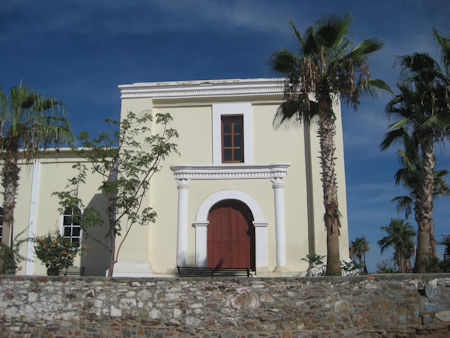
Because a mission was an enterprise more than a location, the official mission name was Nuestra Señora del Pilar de la Paz and used in letters that dealt with financial matters. It was however, commonly called the Todos Santos mission, especially after the Jesuit expulsion in 1768. The Franciscans for five years and Dominicans who followed in 1773, only used the location name, Todos Santos.
Through the years from 1725 to 1840, the name changed from Todos Santos to Santa Rosa de las Palmas to Nuestra Señora del Pilar de la Paz, and back to Todos Santos. This was not the only case of a mission known better by the older location name after it moved there.
Baja California continues to be a wonderland of exploration and discovery. The peninsula seems to be a place with endless adventures. The traveler in Baja California sees new things with each trip, even if returning to the same place as before. Learning some of the history opens up new chapters of exploring and discovery.
About David
David Kier is a veteran Baja traveler, author of 'Baja California - Land Of Missions' and co-author of 'Old Missions of the Californias'. Visit the Old Missions website.